On Gold Mountain Read online
Page 48
Seven months after Fong See’s death, Congress would pass the act of September 11, 1957, which stemmed from the U.S. government’s persecution of accused Communists. Chinese who were living in the United States illegally—mostly paper sons—were encouraged to step forward, identify themselves to the INS, and, in the process, name other paper sons and those suspected of being Communists. Thousands of Chinese participated; in San Francisco alone, ten thousand Chinese came forward. In exchange, the government granted them legal status, as long as the Chinese proved they weren’t involved in any subversive activities; ninety-nine percent of those who confessed were allowed to remain in the United States.
What Fong See’s mourners realized as they stood outside the chapel in the crisp spring sunshine was that his death marked the end of an era. The world was vastly different from the days when Fong Dun Shung had left China to work on the railroad, and his wife had supported her children by carrying people on her back, changed from the nightmare of the Driving Out and Exclusion, altered by the overturning of restrictive property covenants and miscegenation laws. With Fong See’s death, his family began to envision a new set of hopes and dreams. It was a tribute to Fong See not only how far they had already come, but how far his children, grandchildren, and great-grandchildren would go.
PART VI
CHAPTER 20
FAMILY MEANS EVERYTHING
1957–95
THERE were numerous reasons why the marriage between Carolyn and Richard didn’t work out, but for a few years they both scrupulously chose to suppress them. When Carolyn—the daughter of two alcoholics and the stepdaughter of another alcoholic—married Richard, she ignored the fact that he’d written from Newfoundland that he was the company sot, that an oft-told family story recounted how he’d thrown up on Elizabeth Taylor’s rug, and that he’d already been arrested twice for public drunkenness. Carolyn looked the other way when, at the family banquet at Soochow on their third day of marital bliss, Richard got so drunk that he vomited through his nose and had to be carried out by his buddies. In Newfoundland and Europe, she didn’t worry about his drinking, because he drank “only red wine.” When they returned from Europe and went back to school, Richard continued to drink. Finally she noticed.
Adding to their stress was Eddy, who, following old traditions, played the role of Chinese father-in-law. He meddled, intruded, bossed. Unlike a complacent Chinese daughter-in-law, Carolyn rebelled. She didn’t think it was funny when Eddy suggested she walk ten feet behind her husband. She didn’t laugh when Eddy said it was a joke. She refused to eat the mushy green center of the crab, even when her father-in-law said it was a delicacy. She complained when Eddy took her wedding ring, promising to size it, and never returned it. She got mad at Richard when his father came to the apartment every day, stood over the baby’s crib, and said, “You haven’t changed Lisa’s diaper,” or “Lisa’s sick—again,” or “I’d like to declare Richard as a dependent again this year.” She ignored Eddy when he repeatedly asked her to take Lisa down to Chinatown so that Fong See could give her a Chinese name. And all the while, Carolyn nagged Richard, “Why don’t you grow up? Why don’t you get a job? Why don’t you stop drinking?”
If Richard hadn’t been so cowed by his resentful wife and his interfering father, he might have shot back, “Why can’t you obey? Why can’t you curb your stubbornness? Why can’t you show respect? Why can’t you take a joke? On the other hand, why do you have to always see our differences as a Chinese thing? Why can’t you lighten up?” Instead he just drank. Things were not going well.
Through all of this Carolyn and Richard were in school and managing a tenement apartment downtown. Richard was working toward his Ph.D. in anthropology—the culmination of one sort of American Dream and a legitimate measure of success in the Chinese culture. Carolyn was also in graduate school at UCLA, writing her first novel, and trying to raise a kid.
At the end of 1958, Carolyn found out she was pregnant again. They both knew that they couldn’t possibly have another child, and scrambled to get money together for an abortion. Unfortunately, the abortionist turned out to be a con man who absconded with their borrowed money; fortunately, she miscarried at the end of January.
But none of this was what ultimately made Carolyn leave. What bothered her most about Richard was that he never once told her he loved her. The sad fact was he didn’t. He also wasn’t accustomed to communicating freely. Growing up, he had learned how not to acknowledge people when they were in a room, how to be in a crowded place and create your own space through silence, how to avoid confrontation.
In the spring of 1959, Carolyn met Tom Sturak, a fellow graduate student, and fell immediately and passionately in love. On March 6, 1959, she won second place in the Samuel Goldwyn Awards for her novel; it included a cash prize of five hundred dollars. In June, after five years of marriage, Carolyn told Richard she was leaving. (It might be noted that the night she walked out, Richard uttered the words “I love you,” then went right back to grading papers.) Carolyn took Lisa and ran away to Reno for a quickie divorce.
The family partnership dissolved, China closed, Fong See’s death, a divorce. Where are the happy endings? Where is the See and Fong families’ achievement of the American Dream? Despite everything, just about everyone did have a happy ending, and strangely, for many, those happy endings can be traced back to the death of Fong See. Just as today China can’t relinquish its ancient leaders, it was unthinkable that the See and Fong children could rebel against their father and his old ways during his lifetime. Now they had their chance.
In 1958, finally free of having to prove anything to his father, Ray decided to retire. As always, Bennie went along with his older brother. They sold See-Mar, and each went his separate way. Bennie, after thirty years away, returned to the F. Suie One Company; Ray did some designing for Widdicomb, the furniture manufacturer. In 1960, Ray married Mary Marshall, who proved to be extremely loyal and completely equal to the task of dealing with her husband’s sometimes tempestuous moods. This same year, Ray and Mary traveled through Asia. In Taiwan they looked up Ray’s half-sister Jong Oy. Ray and Mary went to the military compound where Jong Oy lived, but were told she was “not at home.” Ray believed that she was ashamed to let relatives see her in such poor circumstances.
In 1961, after Mary and Ray returned from their trip, the See siblings decided to sell their half of the property in La Habra that Fong See had received in trade for rugs so many years ago. With their portion of the proceeds, Bennie and Bertha bought a ranch in La Habra and began fixing it up. Sissee—who had begun running her own shop on Los Feliz, next to Gilbert’s architecture firm—bought a Thunderbird, and saved the rest. Ming and Sunny bought a house just down the street from Sissee and Gilbert and began transforming it into a Japanese retreat, with koi ponds and shoji screens. Stella and Eddy put all of their money in the bank and began to plan what they might do. Their opportunity came sooner than expected. In late 1961, Ming, Eddy, Bennie, and Sissee formed a new family partnership and bought an existing Asian art store, the Jade Tree, on Robertson Boulevard in the heart of Los Angeles’s design district. Eddy, happily, was once again an equal partner.
With China closed, the family expanded its world. Ming and Sunny continued to alternate a year at home with a year abroad. They traveled to Thailand, Burma, Korea, Persia, and Japan; the types of merchandise available at the F. Suie One Company grew and evolved with each successive journey. In 1963, Stella and Eddy took some of their money from the La Habra property and traveled for a year to Vietnam, India, Penang, and other Asian countries. This trip renewed the wanderlust of their youth.
Eddy and Stella would never be rich, but they would make up for it with style and panache. Over the years—first living in the basement of Dragon’s Den, then working in the store—Stella gradually gave up her cotton dresses for black pants, tunics, and pieces of Chinese folk jewelry. Eddy remained a friend to all. He helped Kuen, Uncle’s son, open a restaurant. He helped the o
ld chef and a waiter from Dragon’s Den open their restaurant. And if Stella and Eddy chose to live in a “bohemian” way, well, what the hell? The house on Lantana was the most enjoyable place to visit, with the best jokes and the best food in town.
Sissee and Gilbert had to wait awhile before they could go on their big trip. Through the late fifties and the whole of the sixties, they were an active couple. Sissee became the president of the Chinese Women’s Club—and one must imagine what a personal triumph this must have been. She was also instrumental in the running of three stores—her own on Los Feliz, the Jade Tree, and, of course, the F. Suie One Company. Gilbert lived up to his mother’s high expectations, becoming the architect of choice in Chinatown. He designed the Sing Lee Theater, numerous bank buildings, and gorgeous homes, and became so respected that he was asked to serve on the board of directors of the East West Bank.
In 1969, Gilbert and Sissee finally got their chance to travel. They toured Asia for six months on what amounted to a second honeymoon. They would forever treasure the romance of Singapore, of listening to “Lara’s Theme” and “Claire de Lune” waft up to their room as they watched junks sailing past on the glistening sea and coolies pushing wheelbarrows on the strand. Later, in 1972, Sissee and Gilbert traveled to the Far East again, with the first Chinese American tour group to go back to the People’s Republic of China.
No matter where the See family went, they always returned to the F. Suie One Company. After decades in business, the family had developed the odd but profitable business of not selling. This practice encouraged stories, and brought in more customers. (Even today, a Procter heir of the Procter & Gamble company likes to recount how he bargained for ten years for a pair of carved Thai dogs.) Wise customers learned to approach Sissee to appeal to Ming or Eddy on their behalf. When complimented on her success, Sissee would just laugh and say, “It’s nothing. I’ve been doing it all of my life.” For the next thirty years, as the siblings died off one by one, life was reduced to simple conversations.
“A lady’s in the store,” Stella might announce. “She likes those two vases, but she doesn’t know where to put them.”
“How about on her mantel?” Sissee would say, pulling herself up slowly from her chair. “What price did you give her?”
“How much have we asked for them?”
“I don’t know. I can’t remember.”
“How about four hundred seventy-five?”
“Want to try six-fifty? Seven-fifty?”
“Five-seventy-five?”
“Whatever comes to your mind.”
“Five-seventy-five!” Stella might conclude, and at least one phase of the negotiation would be complete.
It sounds quiet, and it was. “I don’t have anything interesting to say,” Sissee said, not long before her death. “What am I going to say? Someone came in and looked at a piece of pottery today? My life is very shallow.” Then she added, “It’s hard to talk about how I feel about the store.” I think I understand what she meant. The daily routine of business was mundane; what was important was the art, and the interactions with the family.
When I thought things were getting serious with my future husband, Richard Kendall, I took him down to the F. Suie One Company. He met the relatives and passed their inspection with courtesy, respect, a hole in his corduroys, his sweet smile, and his proficiency with chopsticks. But he also needed to pass another “test”: to step into those dark, murky, dusty rooms, to look and touch and feel—as Stella had done when she first stepped into the store—and, finally, to fall in love in his own way with this stuff. A few weeks later, Dick proposed. Very soon after that, his father asked my mother something along the lines of “Is Lisa stable? Does she understand about family?” And my mother could answer, without a hint of irony or falsehood, “Family means everything to Lisa.”
In 1967, Eddy, the youngest See brother, died when an aneurysm burst next to his heart. He was only sixty-one. Stella went into a deep depression for close to seven years. When she came out of it, she asked a cousin and a girlfriend to travel around the world with her. When they returned, Stella went back to the store, where she worked full-time until she was eighty-three—long enough after Sissee’s death to help Leslee complete an exhaustive inventory.
Ray died in 1974, at the age of seventy-four. Toward the end, he showed a sentimental streak. When he complained that he couldn’t get a decent Chinese meal, Mary learned how to cook elaborate, multicourse Chinese meals from Madame Wu, the famous restaurateur. Just weeks before his death, Mary and Ray attended an auction at the Mission Inn in Riverside, where he instructed her to buy the ceramic water buffalo that he had rested against as a child. (Recently, Mary sold the Nichols Canyon house and moved into a West Hollywood condominium. She has remained faithful to his memory for twenty years.)
Ming died on June 17, 1978, at the age of eighty. For most of his life he had played the role of the aloof Chinese patriarch, but he remained conflicted about his heritage. If a friend happened to say that he wished he were Chinese, Milton would answer, “Are you crazy? The best thing that ever happened to us was that the immigration officials fouled up our last name.” He never had children; he always told friends he didn’t want them to suffer the way he had.
Two years after Ming’s death, Sunny asked for her husband’s half of the F. Suie One Company, so that she could move to New Mexico. An agreement was struck, and Sunny did indeed take a considerable amount of merchandise with her, leaving the rest of the family thankful that they had so many other things stored away in sheds, warehouses, attics, and back bedrooms from all those numerous trips abroad. At last report, Sunny was in her late nineties. No one knows what became of the merchandise.
Ming’s death left just Bennie and Sissee. Bertha often accompanied Bennie as he drove in from La Habra to Chinatown. In 1979, Bertha passed away. Bennie never got over losing his childhood sweetheart, but he promised to keep busy on his ranch and in the store.
In 1981, the F. Suie One Company moved from its longtime location on Ord Street to 1335 East Colorado Boulevard, in Pasadena. (Sissee was especially thrilled by this change, which brought back memories of the days when her parents had been so successful on Raymond Street.) Three years later, on March 5, 1984, Bennie died. He was eighty-one.
Sissee’s sudden death from a heart attack, during the Christmas holidays of 1989, came as a shock to the whole family. Her funeral was hardly the sort of happy occasion that had been common in the past few years—festive rituals such as the huge banquet to celebrate the one-hundredth anniversaries of the F. Suie One and F. See On companies as two of a handful of continuously owned and operated family businesses in Los Angeles (Chinese or otherwise), and the small family banquet of three tables that we had had just months before for Sissee’s eightieth birthday. (It was the latter event that prompted her to ask me to write this story.) But the funeral did have moments of joy, celebration, and triumph. The service was held at Forest Lawn—not in one of the chapels down in the flats, as her father’s had been—but in the Church of the Recessional, at the very top of the hill. Everyone was there, except Stella and Ngon Hung, who were too broken up to attend.
During the eulogy, Gilbert tearfully reminded the assembly that Sissee’s Chinese name was Jun Oy, which meant “true love,” and that for forty-seven years—which included their long courtship—his had been a true love. Actress Beulah Quo recalled that Sissee’s stuffed mushrooms and stuffed bitter melon were her best dishes. Munson Kwok spoke on behalf of the Chinese Historical Society, noting that Sissee’s love of Asian art was in her roots; it was her avocation and her profession. Sitting there, I remembered when Sissee had made me a pot of Chinese “baby soup” of whiskey, ginger, and peanuts to “help bring in the milk” when my first son was born.
At the end of the service, Richard and Yun stood at the exit, handing out money and candy. Then everyone drove downtown to the Empress Pavilion, arguably the best restaurant in Chinatown, for a glorious banquet. Sumoy hugged my m
other. Chuen, Fong See’s eldest living child, came up to me and said, “Well, if Sissee said she wanted you to write this book, then I guess you’d better come over to my store and we’ll talk.”
Sissee See Leong, the last surviving child of the marriage between Fong See and Ticie Pruett, was interred in Forest Lawn’s private Gardens of Memory. In death, Sissee is once again near her mother.
Since Sissee’s passing, Gilbert has turned into a cranky old man who refuses to turn up his hearing aid. In a pattern found in families around the world, he has adopted many of the prejudices and controlling characteristics of his own mother. He has spent years torturing his daughter in the same way his mother tortured him for marrying into the See family. (When Leslee married a Caucasian man, Gilbert wouldn’t let him in the gate for eight years, and wouldn’t talk to him for twelve.) Yet Gilbert’s love for Sissee has never dimmed.
“I kick myself today,” he says. “Every day for the last ten years we drove past the Methodist Church where we were married, but I was always too busy to stop. Why didn’t I stop and go in the chapel just once? I didn’t do it. It haunts me. Everything else was too important. I wouldn’t take the time to do things for the closest person, the one who was dearest to me, and all of a sudden I found out it was too late.”
He’s turned his attention to the store. For over a hundred years the F. Suie One Company has been a solace, a refuge, a world apart. Now it has also become a bit of a battleground between father and daughter over who owns it, who wants it, and whether it should survive. “When it breaks down to a discussion over every one of ten thousand items, it gets to be real hard,” says Leslee, who graduated from USC, went on to UC Berkeley, traveled the world, worked as the assistant curator in the Far Eastern Art Department of the Los Angeles County Museum of Art, and came back to work in the store in the early 1980s so that she could be close to her mother and her aunt Stella.

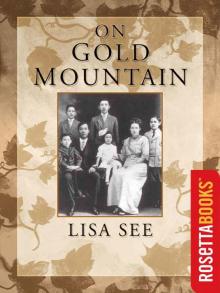 On Gold Mountain: The One-Hundred-Year Odyssey of My Chinese-American Family
On Gold Mountain: The One-Hundred-Year Odyssey of My Chinese-American Family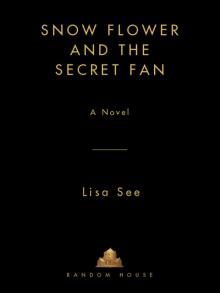 Snow Flower and the Secret Fan
Snow Flower and the Secret Fan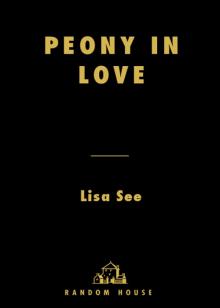 Peony in Love
Peony in Love Flower Net
Flower Net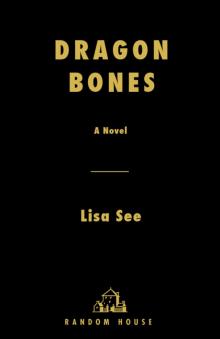 Dragon Bones
Dragon Bones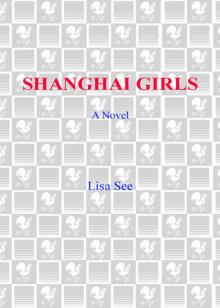 Shanghai Girls
Shanghai Girls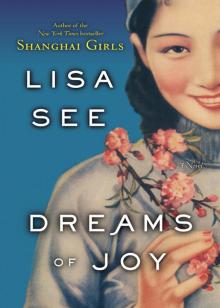 Dreams of Joy
Dreams of Joy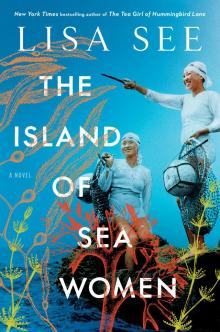 The Island of Sea Women
The Island of Sea Women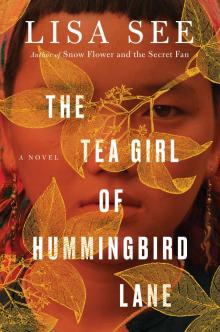 The Tea Girl of Hummingbird Lane
The Tea Girl of Hummingbird Lane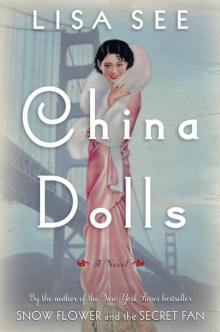 China Dolls
China Dolls The Interior
The Interior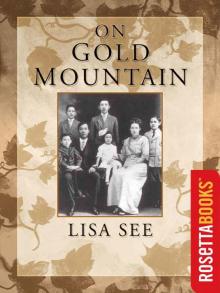 On Gold Mountain
On Gold Mountain